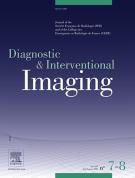Side branch embolization before endovascular abdominal aortic aneurysm repair to prevent type II endoleak: A prospective multicenter study - 01/09/24
 , Koji Sasaki a, Ryota Kawasaki b, Hiroki Horinouchi c, Tetsuya Fukuda c, Naokazu Miyamoto d, Takeki Mori e, Noriaki Sakamoto f, Kensuke Uotani g, Takanori Taniguchi h, Yojiro Koda i, Katsuhiro Yamanaka i, Hiroaki Takahashi i, Kenji Okada i, Taro Hayashi j, Toshitaka Watanabe j, Yoshikatsu Nomura k, Keigo Matsushiro a, Eisuke Ueshima a, Takuya Okada a, Koji Sugimoto a, Takamichi Murakami a
, Koji Sasaki a, Ryota Kawasaki b, Hiroki Horinouchi c, Tetsuya Fukuda c, Naokazu Miyamoto d, Takeki Mori e, Noriaki Sakamoto f, Kensuke Uotani g, Takanori Taniguchi h, Yojiro Koda i, Katsuhiro Yamanaka i, Hiroaki Takahashi i, Kenji Okada i, Taro Hayashi j, Toshitaka Watanabe j, Yoshikatsu Nomura k, Keigo Matsushiro a, Eisuke Ueshima a, Takuya Okada a, Koji Sugimoto a, Takamichi Murakami aHighlights |
• | Pre-emptive transcatheter arterial embolization of aortic side branches helps prevent type II endoleak after six months in patients with abdominal aortic aneurysm treated with endovascular abdominal aneurysm repair. |
• | Successful coil embolization is achieved in 80.9% of aortic side branches. |
• | Pre-emptive transcatheter arterial embolization of aortic side branch leads to significant sac shrinkage after 12 months following endovascular abdominal aneurysm repair. |
Abstract |
Purpose |
The purpose of the study was to evaluate the efficacy and safety of pre-emptive transcatheter arterial embolization (P-TAE) of aortic side branches to prevent type II endoleak in patients with abdominal aortic aneurysm after endovascular abdominal aneurysm repair (EVAR).
Materials and methods |
This multicenter, prospective, single-arm trial enrolled 100 patients with abdominal aortic aneurysm from nine hospitals between 2018 and 2021. There were 85 men and 15 women, with a mean age of 79.6 ± 6.0 (standard deviation) years (range: 65–97 years). P-TAE was attempted for patent aortic side branches, including the inferior mesenteric artery, lumbar arteries, and other branches. The primary endpoint was late type II endoleak incidence at 6 months post-repair. Secondary endpoints included changes in aneurysmal sac diameter at 6- and 12 months, complications, re-intervention, and aneurysm-related mortality. Aneurysm sac changes at 6- and 12 months was compared between the late and no-late type II endoleak groups.
Results |
Coil embolization was successful in 80.9% (321/397) of patent aortic side branches, including 86.3% of the inferior mesenteric arteries, 80.3% of lumbar arteries, and 55.6% of other branches without severe adverse events. Late type II endoleak incidence at 6 months was 8.9% (8/90; 95% confidence interval: 3.9–16.8%). Aneurysm sac shrinkage > 5 mm was observed in 41.1% (37/90) and 55.3% (47/85) of the patients at 6- and 12-months post-EVAR, respectively. Patients with late type II endoleak had less aneurysm sac shrinkage than those without type II endoleak at 12 months (˗0.2 mm vs. ˗6.0 mm; P = 0.040). No patients required re-intervention for type II endoleak, and no aneurysm-related mortalities occurred.
Conclusion |
P-TAE is safe and effective in preventing type II endoleak, leading to early sac shrinkage at 12 months following EVAR.
Le texte complet de cet article est disponible en PDF.Keywords : Abdominal aortic aneurysm, embolization, Endoleak, Endovascular aneurysm repair, Interventional radiology, Safety
Abbreviations : AAA, ASB, ASC, EVAR, CECT, CI, IMA, LA, PC-AKI, P-TAE, SD, T2EL
Plan
Vol 105 - N° 9
P. 326-335 - septembre 2024 Retour au numéroBienvenue sur EM-consulte, la référence des professionnels de santé.
L’accès au texte intégral de cet article nécessite un abonnement.
Déjà abonné à cette revue ?

